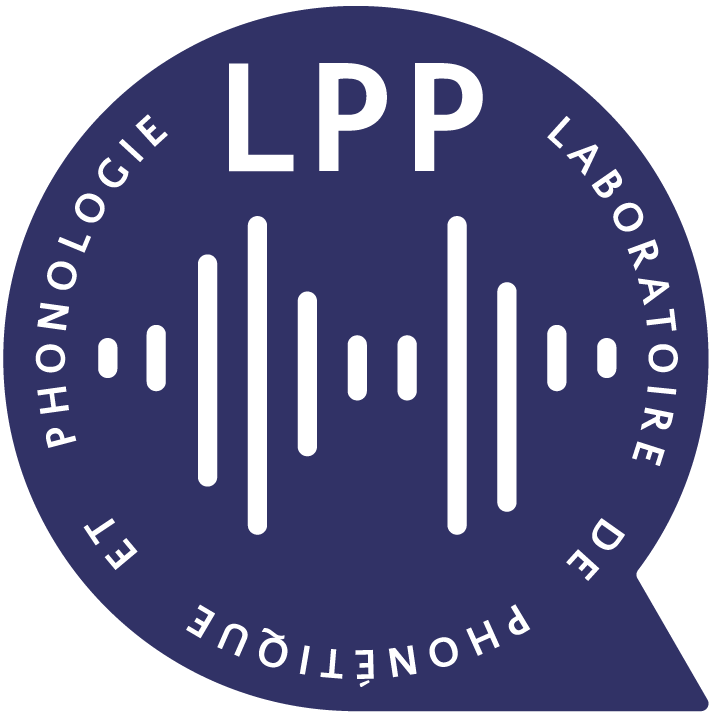Maliêng (Vietnamese: Mã Liềng), a Vietic language, has intriguing patterns of interaction between lexical tone, phonation types and vowel qualities. Alexis Michaud will present fresh fieldwork results obtained in 2024 by Albert Badosa Roldós (Ph. D. student at Université Sorbonne Nouvelle) with a vibrant team of young Vietnamese phoneticians/phonologists (Tạ Thành Tấn, Trần Quang Minh, and Nguyễn Thị Minh Châu). A leading thread in the presentation will be that a collaborative, multidisciplinary approach, encompassing immersion fieldwork and diachronic phonology alongside experimental phonetics and phonological modelling, is of the essence to steer clear of various pitfalls: from the acoustic analysis of audio data to the interpretation of the tonal system as a whole.
Catégorie d'événements : SRPP
SRPP: Phonetics and phonology of prenasalized consonants in Mbugu
Didier Demolin, Angélique Amelot, Michael Karani & Maarten Mous
This presentation will focus on the phonetics and phonology of prenasalized consonants in Mbugu and on an exemplary case study of this phenomenon for voiceless prenasalized of this language. This research is based on a field study carried out in March 2024 as part of the Sysori project (LPP, Sorbonne nouvelle, LPL Aix-en-Provence & University of Dar es Salaam). One of the aims of this project is to gather new instrumental data to understand phonetic phenomena specific to the languages of the Rift Valley in East Africa. The aim is to describe precisely physical and biomechanical aspects of specific sounds in order to improve the understanding of diachronic phenomena in the sound systems of this region’s languages. Two other objectives are to contribute to the understanding of certain fundamental theoretical issues (speech timing and articulatory dynamics) and to use new phonetic tools for fieldwork.
Mbugu is a mixed language (Bantu and Cushitic) whose sound system has features common to Bantu (prenasalized consonants) and specific to Cushitic (lateral fricatives, palatal consonants). The study of the Mbugu sound system (which also includes voiceless nasals) is important for understanding the effects of the emergence of a mixed language on the sounds used, modified and borrowed. A number of East African languages devoice the nasal part of prenasalized consonants. These include Nyamwezi and Sukuma, Schadeberg (1992) and Maddieson (1991) and Pokomo, Huffman & Hinnebusch (1998), as well as the mixed/bantu language Ma’á/mbugu, Mous (1993).
The data come from recordings made with 8 Mbugu speakers (2 females and 6 males) combining aerodynamic, acoustic and EGG measurements in a set of 86 words including all prenasalized consonants that appear mainly, but not exclusively, at word initial position in class 9/10 nouns. There are also examples of prenasalized consonants internal to the word such as: kimhpanga ‘falcon’ (IMb+NMb) [internal IMb Mbugu & NMb mbgu normal], kufúnhtu ‘pour’ (IMb), kuʔonhti ‘wash’ (IMb), kuhunhta ‘blow’ (NMb), Irenhte name of a village (I+NMb).
Data were acquired with the AeroMask, designed to simultaneously record oral and nasal airflow, intraoral pressure for labial sounds, EGG and acoustic signal. The mask separates oral and nasal airflow and records intraoral pressure for labial sounds using a tube set between the lips. The special feature of the mask is that it is aerodynamically opaque and acoustically transparent, enabling the acoustic signal to be recorded without additional distortion or resonance. Our presentation will detail this acquisition system and the Matlab script designed to acquire and process the data.
The aerodynamic and acoustic study of the voiceless prenasalized consonants of Mbugu confirms the observations of Mous (1993). Voiceless prenasalized consonants show greater variation than their voiced counterparts. The stop oral part may not be realized, but then manifests itself as a kind of aspiration at the end of the nasal. The nasal part can be either voiceless or voiced. Aerodynamic recordings show a significant nasal airflow when the nasal is identified as voiceless. The EGG confirms that there is no vibration of the vocal folds in this case. In our data, female speakers seem to show greater variation for nasals than males. Prenasalized voiced consonants are always realized with a short oral part at the end of the nasal showing a clear explosion.
Questions relating to the speech timing model proposed by Turk & Shattuck-Huffnagel (2020) will be discussed on the basis of our results.
References
Huffman, Marie K. and Thomas J. Hinnebush 1998. The phonetic nature of “voiceless” nasals in Pokomo: Implications for sound change. Journal of African Languages and Linguistics 19: 1-19.
Maddieson, Ian 1991. Articulatory phonology and Sukuma ‘aspirated nasals’. In Kathleen Hubbard (ed.) Proceedings of the 17th annual meeting of the Berkeley Linguistic Society, Special session on African language structures, pp. 145-54. Berkeley: Berkeley Linguistic Society.
Maganga, Clement and Thilo C. Schadeberg 1992. Kinyamwezi Grammar, Texts, Vocabulary. Cologne: Rüdiger Köppe.
Mous, Maarten 2003. The making of a mixed language: The case of Ma’á/Mbugu. Amsterdam: John Benjamins.
Turk, Alice and Shattuck-Hufnagel Stéphanie. 2020. Speech Timing. Implications for Theories of Phonology, phonetics, and Speech Motor Control. Oxford, Oxford University Press.


